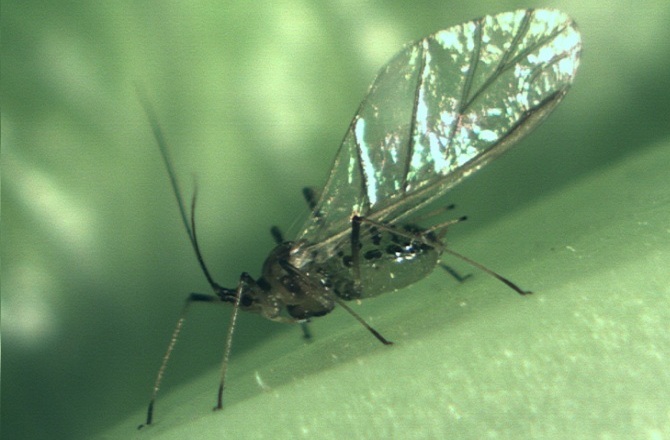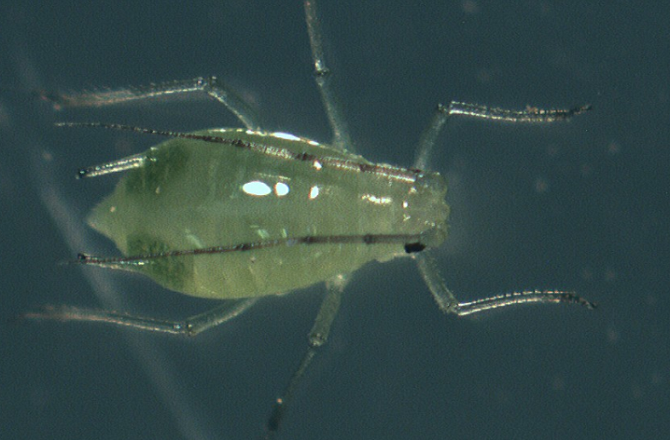
|
|
|
|

|
|||
|
|
|||
|
For the most part, aphid pressure in the Yuma Valley has been quite low this season. However, green peach aphids have recently begun to increase on older lettuce plants (2nd side-dress stage) and large colonies can easily be found. Reports from Dome Valley and Wellton suggest that aphid populations are increasing there as well. This is common during February when produce acreage begins to rapidly decline and aphids tend to disperse to available crops. Furthermore, foxglove aphid alates (winged forms) have been found on lettuce, with a few small colonies beginning to develop. Foxglove aphid is important because it has a tendency to colonize on younger leaves. This often translates into contamination of the heads or hearts of iceberg lettuce, romaine and celery. The key to effective foxglove aphid (and other aphids as well) management with foliar insecticide is to initiate sprays at the time apterous (wingless) aphids begin to colonize. Of course, this requires diligent scouting and sampling. The UA action threshold for aphids recommends that applications be made when 10% of the plants sampled contain aphid colonies (4 or more apterous aphids). Fortunately, PCAs have numerous alternatives for foliar aphid control. Movento is highly effective, and has the broadest-spectrum of activity against aphids commonly found on desert produce crops. Because it is fully systemic, it can pick up aphids colonizing deep within heads, and spray timing or application method is not as critical as with the other alternatives that are translaminar or require contact activity. Beleaf and Assail are also good foliar alternatives for aphids, and typically perform best with ground applications. For more information on insecticide alternative please visit the Aphid Control Chart for 2013. Be sure to check that MRLs are established for export before using any of these products.
Remember: When in Doubt-Scout.
Click picture to listen to John
To contact John Palumbo go to: jpalumbo@ag.arizona.edu
|
|||
| Back | |||
|
For questions or comments on any of the topics please contact Marco Pena at the Yuma Agricultural Center.
|
|||
|
Home |
Cotton | Veggies |
Forages | Grains
| Citrus |
Crop x Crop Insects | Diseases| Weeds | Pesticides | Economics | News | Weather | Research | Photos | Contacts | General Info. Copyright © 2001 University of Arizona, College of Agriculture and Life Sciences Webmaster: Al Fournier (acis@ag.arizona.edu) |
|||


